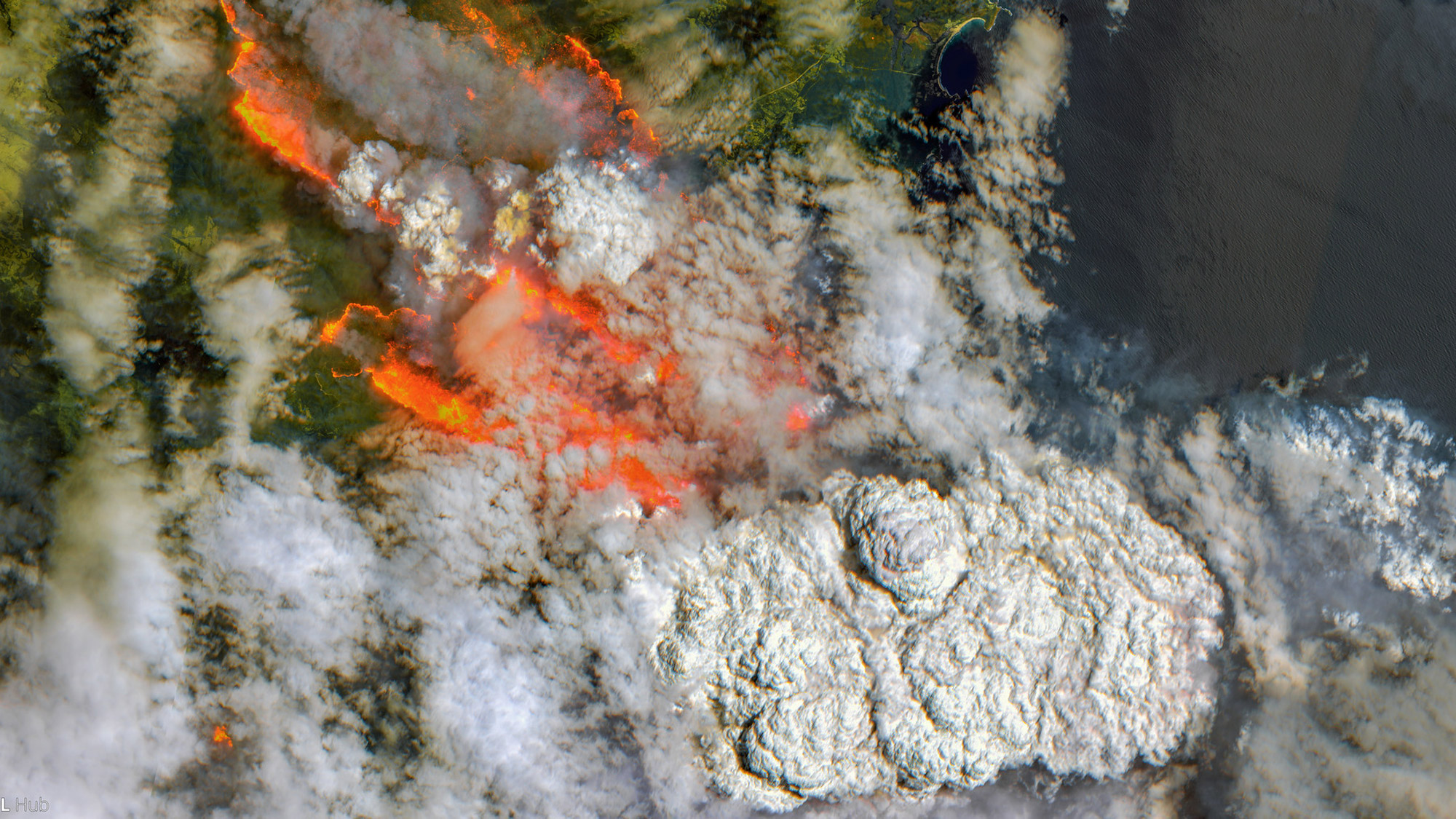
This article, originally published in @theu, January 16, 2020, was written by Lisa Potter,
Charred koalas, acres of burning forest, families hiding in the ocean—images of the Australian bushfires are disturbing. The latest estimates say that over 25 million acres have burned. For context, the famous “Black Saturday” bushfires in 2009, one of the worst in Australia’s history, burned 1.1 million acres. The widely reported 2019 fires in the Amazon basin burned approximately 17.5 million acres. At least 28 people have died.
Mitchell Power, curator of the Garrett Herbarium at the Natural History Museum of Utah and associate professor of geography, is a paleofire scientist. He looks at thousands of years of history through sediment records to see how fire has shaped plants and animal communities for millennia. @theU spoke with Power to help wrap our heads around the Australian bushfires.
Fires are a regular part of Australia’s ecosystems. How are these different?
The fact such a large area burned in Australia in just a few months is remarkable. Several of my colleagues at the University of Utah have worked closely with Indigenous Australian peoples and learned how fire has been used as a tool for millennia to optimize their own subsistence and cultural practices while minimizing the negative consequences of large-scale destructive fires.
Ultimately, the key difference between prehistoric fires and those seen today is scale. The traditional use of fire, which has likely been in place for over 65,000 years, still occurs in large regions of northern Australia where Indigenous communities practice cool-season burning to create patchy landscapes buffered against large-scale fire events.
Reading and listening to discussions by fire ecologists, anthropologists, climatologists and geographers in Australia makes one thing clear—the 2019-2020 bushfires are likely on a scale not experienced for millennia.
How have the fires impacted animals?
The latest figures out for the number of animals being impacted is estimated at over 1.3 billion animals. Estimations from Chris Dickman, an expert on Australian biodiversity at the University of Sydney, suggests the number of species affected may be much higher.
A recent estimate from the Australian environment minister suggests that over 8,000 koalas were killed in just the New South Wales fires, and that estimate is likely to grow. Animals like rodents and reptiles that can burrow or outrun the flames may face peril later as food, water and other resources necessary for their survival and reproduction success, are unavailable. Reptiles, which tend to burrow in soils and may potentially survive the initial wave of flames, will discover the resources they depend on may not be available after the fires have passed.
What circumstances led to these wildfires?
In a single word: climate. The combination of multiyear trends of record heat and unprecedented drought in a region that’s already dry, has led to the extreme fire conditions. 2019 was the hottest year on record for Australia with temperatures 1.52°C above the 30-year average based on data from 1961 to 1990. The fires burning in New South Wales, for example, are in response to a region that broke high-temperature records set in 2018 by 1.95° C warmer than normal. In comparison, the second hottest year since 1900 records began in Australia was 2013, followed by 2005, 2018 and 2017, consecutively. In terms of drought, 2019 also made new records, with 40% lower precipitation than the long-term average.
Is Australia able to fight the fires?
Fighting or attempting to suppress the current bushfires is difficult if not impossible. The magnitude of the problem is beyond what most wildland firefighters are trained for. When extreme weather occurs, including higher-than-average temperatures and lower than average moisture, paired with extreme winds and unpredictable fire behavior, the firefighting toolkit becomes obsolete.
An additional challenge is seasonality. As in the United States, Australia firefighting is organized around the concept of a “fire season,” which suggests a predictable time of year to maximize resources. As much of the world experiences rapid changes in our climate system, anomalous warm days in the winter months and extreme drought in the wet season are now common conversations. The ability to predict the time and place of extreme fire conditions is being tossed out the window.
Can the ecosystems recover?
Ecosystems recover—the Earth has a way of healing after large-scale disturbances. The challenge comes when humans further reduce the biological diversity and confine that diversity to increasingly small refugia. The problem in extreme fire conditions is when the seeds stored in soils—the habitats available for animals to reproduce and survive in—are lost or significantly reduced.
There is some optimism emerging from the Australian fires. Just weeks after bushfires have passed, many habitats are beginning the slow process of recovery. Most of these systems have evolved with fire, so plants and animals know how to take advantage of the disturbance. Photographs of seedlings emerging from the charred landscape give hope after the smoke has cleared. The disconnect between destruction and recovery is really a human construct. Our lifespans are often too short to see an ecosystem completely recover.
It is unclear if vegetation and animal communities will return to normal in Australia, and it is unclear how normal will be defined. The reality is that species are going extinct at unprecedented rates all over the world. Our climate system is beginning to express itself as a runaway train, and we all have a tremendous amount of work to do if we want to give earth and its ecosystems the ability to recover after these extreme disturbance events.
